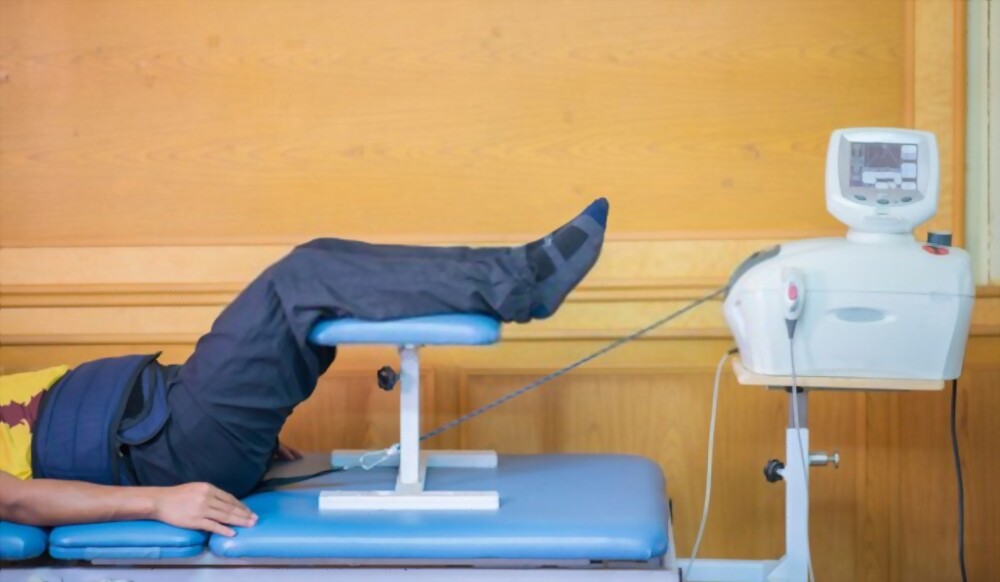Definition/Description
Lumbar traction is the process of applying a stretching force. This force is applied to the back at the lumbar spine, moreover at the vertebrae.
Types of Lumbar Traction
- Continuous Traction – it uses low weights for extended periods of time, in this type thus only small amounts of weight be used.
- Sustained Traction – This involves heavier weights, however are applied for short periods of time
- Intermittent Mechanical Traction – it utilises a mechanical unit to alternately apply and thus release the traction force
- Manual Traction – Manual traction is applied by the clinician’s hands
- Positional Traction – This is applied by placing the patient in various positions using pillows, blocks, or also sandbags.
How does traction work?
- Distracting the motion segment is thought to change the position of the nucleus.
- traction has also been shown to reduce nucleus pulposus pressure.
- It has also shown to increase foraminal area
- some forms of traction stimulate disc or joint repair
- conditions in which traction may be helpful are low back pain, radiating pain, herniated lumbar disc, also sciatica, etc.
In deciding what traction weight to apply, consider the following aspects-the amount of weight which will overcome friction between the body and the amount of force to exert an effect on the back or the lumbar spine.

Also read- https://vcurehealthcare.com/what-signs-of-professional-burn-out-can-look-like/
Also Visit: The AeroNation – Latest Aviation, Aerospace & Defence News & Insights
